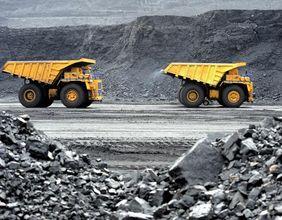Highlights
- China aims for a 5% GDP growth target in 2025, mirroring the previous year's goal.
- Government signals focus on economic stability, reforms, and industrial innovation.
- Key sectors, including technology and manufacturing, expected to drive momentum.
China has announced its ambitious target of achieving approximately 5% economic growth in 2025, a goal that remains consistent with the previous year’s objective. The announcement came as the National People’s Congress (NPC) commenced its annual session, emphasizing the government’s commitment to stabilizing the economy while navigating global uncertainties.
Despite facing challenges such as trade tensions, real estate market fluctuations, and evolving global economic conditions, China continues to implement strategic policies aimed at strengthening its economic foundation. The government's renewed focus on industrial innovation, digital transformation, and infrastructure development is expected to support this growth trajectory.
Technology and Infrastructure to Lead Growth
China’s push for technological advancements is evident, with significant investments expected in artificial intelligence, semiconductor manufacturing, and clean energy solutions. Leading technology firms, including Alibaba (NYSE:BABA) and Tencent (HKG:0700), remain at the forefront of digital expansion, with initiatives supporting cloud computing, e-commerce, and fintech.
Infrastructure projects will also play a vital role in economic stimulation. With a strong emphasis on high-speed rail networks, urban development, and smart cities, companies such as China Railway Group (SHA:601390) and China Communications Construction (HKG:1800) are set to benefit from government-backed initiatives. These large-scale projects are designed to enhance connectivity and support urbanization trends.
Manufacturing and Consumer Sectors in Focus
China’s manufacturing sector is poised for further growth, with electric vehicles (EVs) and renewable energy industries drawing significant attention. EV manufacturers like BYD (SHE:002594) are expanding production capabilities to meet rising global demand. In addition, companies such as CATL (SHE:300750), a leading battery producer, are integral to China’s green energy ambitions.
The consumer market remains a crucial driver of economic expansion, with companies such as JD.com (NASDAQ:JD) and Meituan (HKG:3690) catering to evolving shopping habits through digital retail and food delivery services. The government’s focus on increasing domestic consumption aligns with the push for innovation in retail and e-commerce sectors.
Global Outlook and Economic Stability
With China maintaining its 5% growth target, analysts anticipate continued policy support to ensure economic resilience. The government’s approach includes monetary easing, pro-business regulations, and incentives for high-tech industries. Meanwhile, international markets will closely monitor China’s economic policies, particularly regarding trade relations and investment opportunities.
As China embarks on another year of economic transformation, key sectors such as technology, manufacturing, and consumer industries are expected to drive momentum. While challenges persist, the nation’s strategic initiatives aim to bolster long-term economic stability and innovation-led growth.





